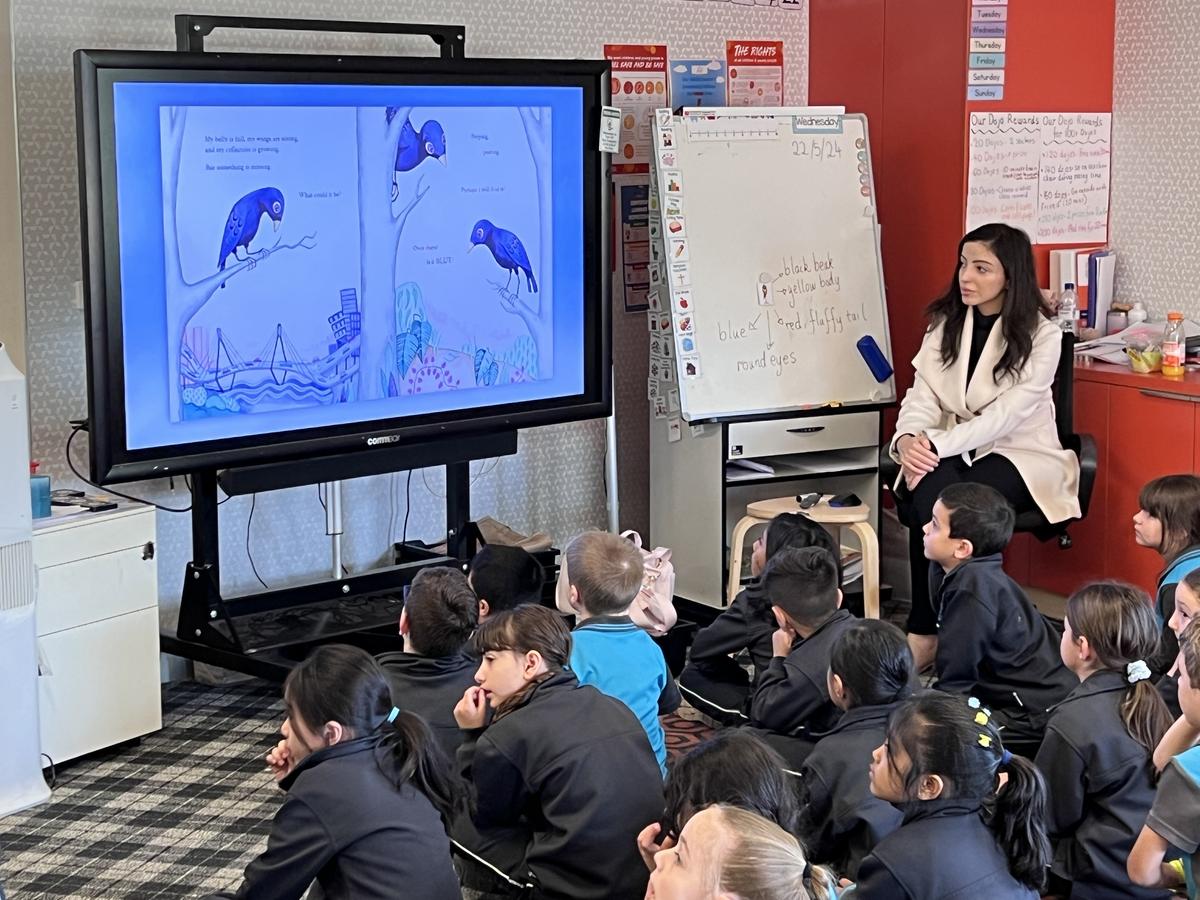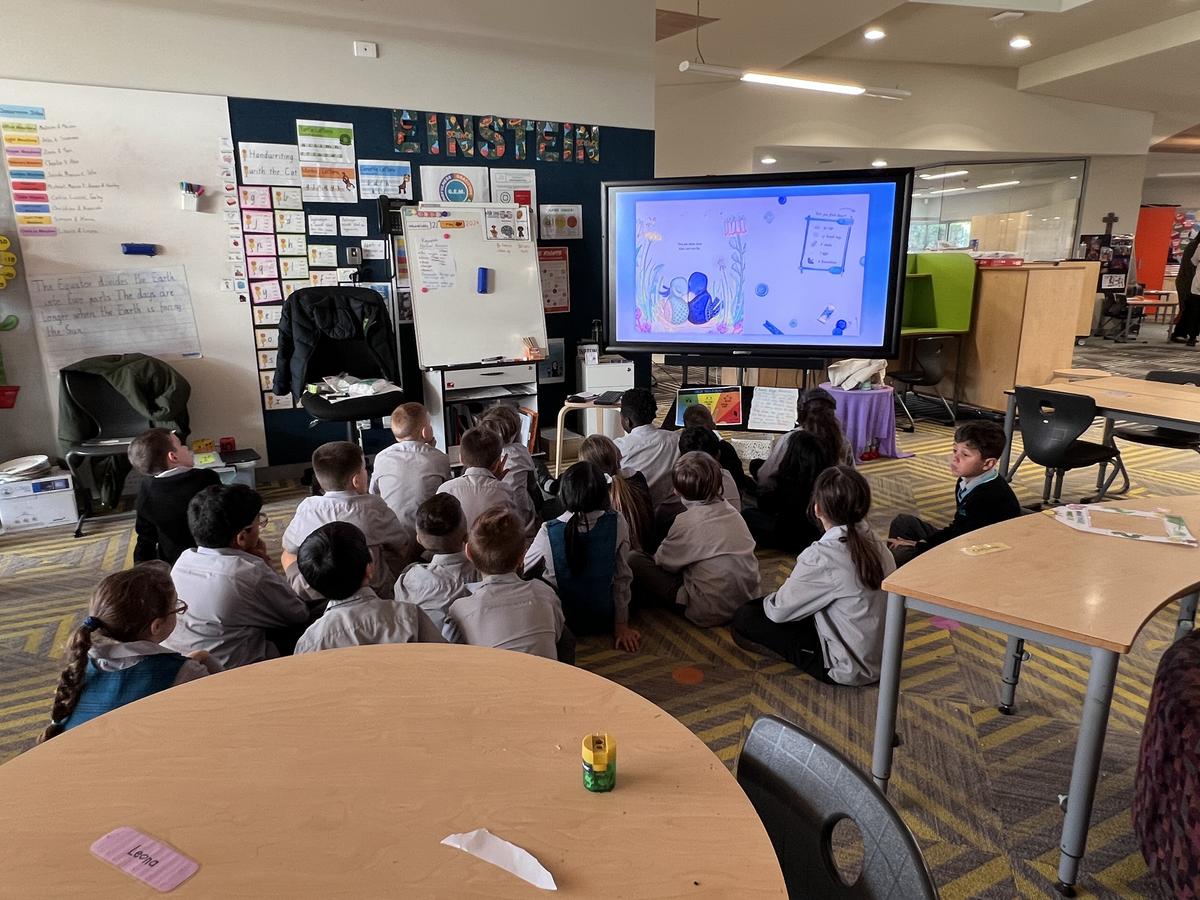Learning and Teaching

Reading at SMCM: Introducing Decodable Readers & How to Support Your Child
You may have noticed that your children have started to bring home a different type of reader from previous years. At SMCM the use of decodable books have been introduced into our reading teaching and literacy block.
As part of our La Trobe/AERO Research Project through the SOLAR Lab, our F-2 staff have undergone extensive professional development via the SOLAR Lab from La Trobe, led by Professor Pamela Snow and Professor Tanya Serry. In addition to this, teachers have been trained in the Little Learners Love Literacy (LLLL) Program, which is a Systematic Synthetic Phonic approach to the teaching of reading. As part of this project, our school was provided with the LLLL decodables books, games and resources to teach the skill of decoding for beginner or novice readers. Our decodable books follow the explicit phonic teaching in the class. This ensures students are being provided with books they can practise decoding with the letters/phonics that have been explicitly taught in the class.
Choosing a Book
Decodable Books
Ideally, reading books should link with the program of teaching reading and spelling in the classroom. Initially, children should practise their reading using decodable books chosen by their teachers or parents. These books contain words made of the letter-sound associations taught in a sequential phonics reading and spelling program.
Decodable reading books follow a very structured, systematic introduction of new sounds and letters. They start with small regular words. Regular words are words where the sound/letter relationships are the ones the child has been taught. These small regular words are often referred to as ‘CVC’ words. The term ‘CVC’ means Consonant, Vowel, Consonant - words like cat, dog, leg, pin, bus. Once children can read these they then move on to reading longer words, like cobweb, and words with digraphs (two letters representing one sound), like ship. For example, once the child has been taught the sounds that link with these letters: s, a, t, m, o, n – they can read the following sentence: Sam sat on Tam.
Examples of Decodable Books: Phonics Books UK; Little Learners Love Literacy readers, InitiaLit readers, Sounds-Write readers, SPELD SA Phonic Books.
Although these books may not seem too exciting at first, children will enjoy practising their newly acquired decoding skills and being successful readers. While children are developing their reading skills using decodable books, parents and teachers can also read a wide variety of longer and more complex stories to their children.
Other Books
Once the child has a strong understanding of the alphabetic principle (how the sounds in language map onto letters and letter patterns), they can begin to read a wider range of books. The five-finger rule can help you find a reading book at the appropriate level.
- Choose the book your child will read (or have them choose one from a range of books).
- Choose a typical page towards the middle of the book (with lots of words and not too many pictures).
- Ask your child to read aloud and each time they come to a word that they don’t know, hold up one finger out of sight).
- If you end up with five fingers before the end of the page, stop reading the book and choose another one, or finish reading the book to your child.
- If you have no fingers up by the end of the page then it’s probably too easy, if you have one or two then it’s probably the right level.
Pause-Prompt-Praise
Pause
- Pause for 3 seconds when errors are made to give the child a chance to self-correct.
Prompt
- Prompt when the child doesn’t self-correct.
- Model how to segment the word into the letters or letter groups that go with each sound as you sound-out the word.
- Move your finger along the word as you pronounce the sound each letter or letter group makes.
- Then blend (or put together) the sounds as you move your finger along.
- Repeat the previous step, but in a quicker motion.
Example 1:
Child: “The quick brown fox j…” (2-3 seconds)
Parent: “j-u-m-p-s, jumps”
Example 2:
Child: “ The boy said …” (2-3 seconds)
Parent: “th-a-n-k, thank”
Prompting can also include:
- identifying the first sound and encouraging the child to sound-out the rest of the word
- helping the child to break-up the word into its syllables
- providing the word to assist reading fluency Use your finger to cover each chunk as you pronounce the syllables.
Praise
Praise the child’s attempts at reading. Use encouraging words when they have a go at a difficult word, have no or few errors, read fluently, finish the page or the sentence, or put in a lot of effort.
A Warning About Using Picture and Context Clues
Good readers don’t need to rely on pictures and context clues because they can decode (segment and blend sounds to form words). Research shows that poor readers tend to over-rely on one strategy, such as the use of context clues or visually guessing (often using the first and last letters of the word), to the exclusion of more appropriate strategies. These students find reading effortful and because their accuracy is poor, they also struggle with reading comprehension, fluency, spelling, and writing.
It has been estimated that only one out of every four words can be predicted using context. Content words are the most difficult to predict – only about 10% can be predicted – and these are generally the words that students really need to make sense of the text. So discourage your child from guessing and focus on the word attack skills that will help them to develop a stronger understanding of the reading process.
National Simultaneous Story Time
Wednesday 22nd May
National Simultaneous Storytime (NSS) is an important campaign held annually by the Australian Library and Information Association (ALIA) that aims to encourage more young Australians to read and enjoy books.
Every year a picture book, written and illustrated by an Australian author and illustrator, is read simultaneously in libraries, schools, pre-schools, childcare centres, family homes, bookshops and many other places around the country. Now in its 19th year it is a colourful, vibrant, fun event that aims to promote the value of reading and literacy using an Australian children's book that explores age appropriate themes, and addresses key learning areas of the National Curriculum for Grades Foundation to Year 6 and the pre-school Early Learning Years Framework.
This year the book is 'Bowerbird Blues' by Aura Parker. Below are some snaps of our students enjoy this school- and nation-wide experience.
Rafael
Learning & Teaching and Digital Technologies Leader
Rafael.Fernandez@smcmeppingnth.catholic.edu.au
Allison
Science of Learning and Literacy Leader
Allison.Luff@smcmeppingnth.catholic.edu.au
Sawako & Rachel
Mathematics Leaders
















